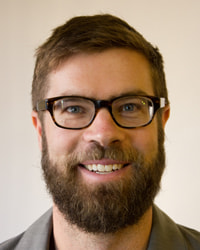Not many undergraduate theses wind up in leading research journals – let alone breaking new ground in a hot scientific field. But a newly published paper by recent McGill Physics graduate Evelyn Macdonald and her supervisor, Assoc. Prof. Nicolas Cowan, presents a new ‘fingerprint’ of Earth’s atmosphere that could help astronomers in their quest to find Earth-like planets beyond our solar system.
Macdonald and Cowan used data from SCISAT – a Canadian satellite launched in 2003 to help scientists understand the depletion of the ozone layer – to construct a transit spectrum of Earth in infrared light. Astronomers can tell what molecules are in a planet’s atmosphere by looking at how starlight changes as it shines through the atmosphere. Instruments must wait for a planet to pass – or transit – in front of the star to make this observation. Macdonald and Cowan’s transit spectrum of Earth could serve as a benchmark in the search for exoplanets with atmospheres capable of sustaining life.
The idea of drawing a link between data gathered by a satellite orbiting the Earth and telescope observations of a distant planet passing in front of its star emerged when exoplanet specialist Cowan crossed paths with Yi Huang, a McGill professor of atmospheric and oceanic sciences, at an interdisciplinary lunch at the McGill Space Institute (MSI). Cowan was describing transit spectroscopy of exoplanets when Huang pointed out a striking resemblance to SCISAT’s viewing geometry of the Earth.

“I thought this sounded great,” Cowan recalls. “And, like you always do with these things, jotted it down on a piece of paper and forgot about it – until I had an undergrad student who wanted to do her thesis with me.”
That student was Evelyn Macdonald, a Montrealer whose childhood interest in space had led her to pursue an honours physics degree at McGill.
“One thing I liked about this project was that it was self-contained. I would be the main person working on it, which was a great learning opportunity,” Macdonald says.
For a student whose primary interest was in exoplanets, the deep dive into atmospheric physics that this project would demand might not have been an obvious path to take, but Macdonald was undeterred.
“I knew why exoplanets were such an exciting area of astronomy for me but I didn’t really know what there was to be done in the field,” she says. “This project was interesting because of its implications and the things we could learn from it, so I was ready to learn whatever I had to to be able to do it. And it turns out I find atmospheric physics very interesting now.”
One big challenge early on: the project “involved a lot of programming in Python, which I barely knew how to use,” Macdonald recalls. “I had to teach myself as I went. Even if I understood what I was trying to do, I had trouble implementing it in the code. I eventually got better at that since I was spending so much time on it. Prof. Cowan was a very devoted and patient supervisor, which helped a lot.”
Such was her motivation that Macdonald completed her thesis a full year before she had finished her other degree requirements. Cowan recognized the manuscript’s potential for publication and encouraged Macdonald to develop it further. Backed by an undergraduate research award (SURA) from McGill’s Faculty of Science, Macdonald spent the following summer doing just that with an internship at the Institute for Research on Exoplanets (iREx), a collaboration between McGill University and the Université de Montréal.
“I’m extremely grateful for the summer internship at iREx, which was made possible by the SURA,” Macdonald says. “That was when I got to know the other students at the MSI. I was also exposed to a lot of astronomy research, especially in the field of exoplanets, through various talks and discussion groups.”
As Macdonald worked on the paper, Cowan continued to provide support, answering questions and giving feedback on drafts. Cowan emphasizes the significance of Macdonald’s achievement in lead-authoring a paper that has taken the field beyond models and predictions of what a habitable planet’s spectrum might look like to an actual example based on real, richly detailed data from Earth.
“A case like Evelyn’s where she was the first author – she actually wrote the entire paper – that requires a combination of a very good student working really hard for a long time, and some luck. That’s only happened two, maybe three, times in my career where I’ve worked with 40-something undergraduate researchers.”
Macdonald plans to continue studying potentially habitable planets when she begins a Ph.D. at the University of Toronto in the fall, an undertaking for which she feels well prepared by her time as a McGill honours student.
“The honours thesis helped prepare me for a future in academia. It was a great chance to get some research experience since it was part of the curriculum. It was more self-directed than other classes, which made me feel more invested in my work.”
The article “An empirical infrared transit spectrum of Earth: opacity windows and biosignatures,” by Macdonald and Cowan, was published Aug. 28, 2019, in the Monthly Notices of the Royal Astronomical Society, one of the world's leading research journals in astronomy and astrophysics.
